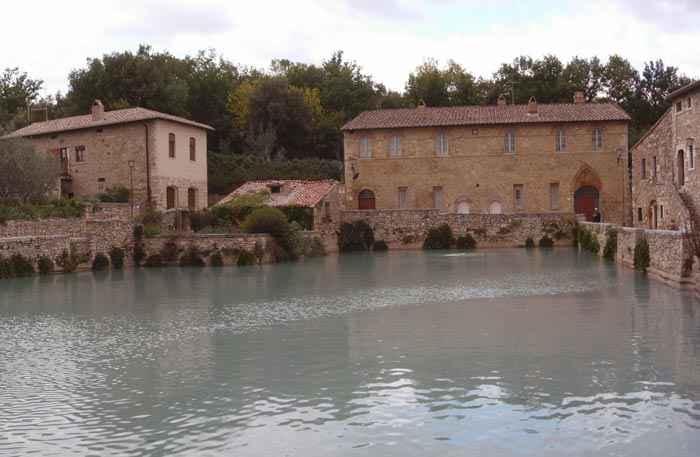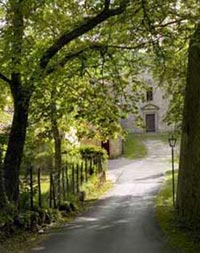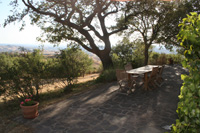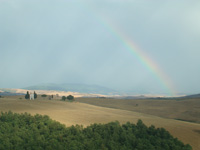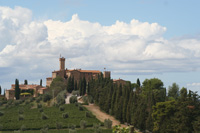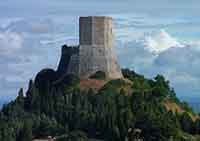|
| Bagno Vignoni, the thermal station that has been known since Medieval times for its celebrated piazza d’acqua. On the slope that leads towards the river, you’ll find the Parco dei Mulini — interesting park that bears witness to plumbing constructions and techniques that were invented in medieval times. |
Bagno Vignoni is a small spa of medieval origin, although it was already know in Roman times. Bagno Vignoni sits on a hill above the Val d'Orcia just south of San Quirico. The fascinating tiny village is clustered around a large pool closed on three sides by the town walls, whith water that flows at 52°. The pool essentially fills the square, surrounded by a 1.5 metre-high wall on three sides. All around are buildings designed by Bernardo Rossellino in honour of Pope Pius II, while on the fourth side is the archway from which St. Catherine of Siena admired the view. This place also fascinated Lorenzo il Magnifico of the Medici family, who spent part of 1490 here. The old Francigena road passes near the village, and as the diary written in 1581 by Michel de Montagne confirms, pilgrims and travellers heading toward Rome frequently stopped in Bagno Vignoni to find comfort in its hot springs.
|
||||
 |
||||
Bagno Vignoni, Parco dei Mulini, caves and thermal bath and hot springs in Bagno Vignoni, San Quirico d'Orcia
|
||||
The water of Bagno Vignoni was analized and described by the naturalist Giorgio Santi, but its usefulness was not limited – as noted by Emanuele Repetti – to its therapeutic effects alone; it served, in fact, to put "in motion 5 or 6 mills built one above another inside the travertine caves." Behind Bagno Vignoni, immersed and hidden in the green of the hill there is the small village borgo Vignoni Alto in a position that dominates the entire Val d' Orcia and the Monte Amiata.
|
||||
 |
 |
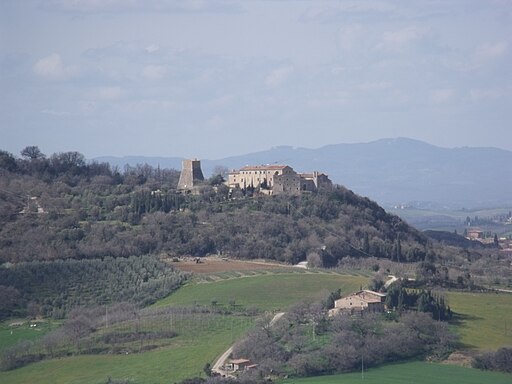 |
||
Bagno Vignoni, Piazza dei Sorgenti
|
La vasca termale e il Palazzo Rossellino nella piazza di Bagno Vignoni
|
Vignoni Alto | ||
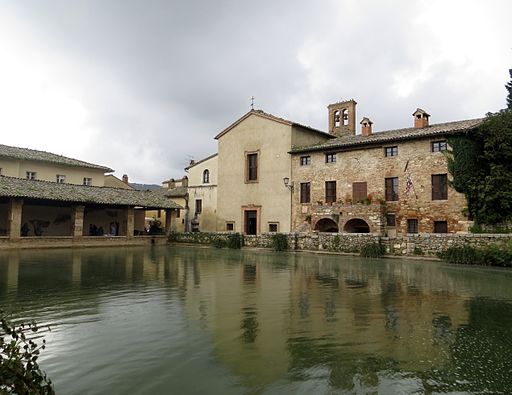 |
 |
 |
||
Bagno Vignoni
|
Vignoni Alto
|
Chiesa di San Biagio a Vignoni Alto
|
||
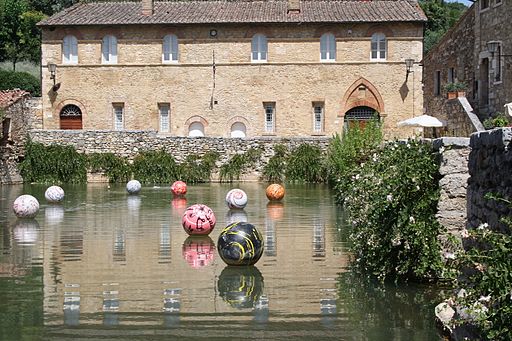 |
 |
 |
||
Bagno Vignoni, Piazza delle Sorgenti, con installazione artistica di Carlo Pizzichini
|
Bagno Vignoni, chiesa di San Giovanni Battist |
Bagno Vignoni, Parco dei Mulini
|
||
The vicinity of the bath to the Via Francigena, the pilgrims' route to Rome, persuaded the less-hurried travellers to make the acquaintance of the spa waters. La Via Francigena was the road, or better said, the bunch of roads that led to Rome from northern Europe. In Tuscany it follows the Cassia way touching San Gimignano, Siena, then San Quirico and Radicofani, travelling along the Val d'Orcia.
|
||||
Watch Bagno Vignoni in Tarkovsky's film Nostalghia
|
||||
| Watch the abbeySan Galgano in the final scene of Tarkovsky's film Nostalghia | ||||
|
||||
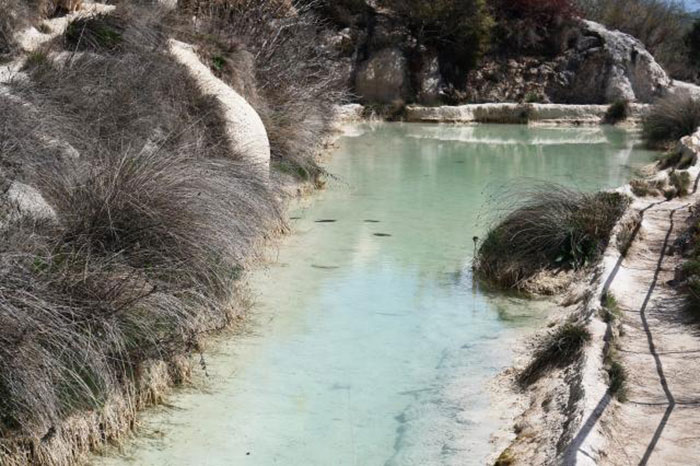 |
||||
Bagno Vignoni, Parco dei Mulini [1]
|
||||
| For a free bath, try the Parco dei Mulini, a hundred meters or so downhill. The better choice is Bagno San Filippo, only half an hour away from Bagno Vignoni. In the heart of the Val d’Orcia, San Filippo is characterized by suggestive calcareous sediments made by the hot sulphurous water. Bagno San Filippo has a similar past: the waters of San Filippo were known by Romans, became famous in Middle Ages, treated famous people like Lorenzo il Magnifico and other princes of the Medici family. The Thermal springs in Bagni San Filippo have created a magical landscape of white limestone formations, waterfalls and small pools of hot water. In the middle of a lush green wood, reached by a short walk. Following a picturesque walking path immersed in the green woods, and accompanied by the sound of the water, you come to the Balena Blanca (White Whale) waterfall. Access to the entire area of the Fosso Blanco is free of charge. One can reach Bgni San Filippo on the SP61, in the direction of Abbadia San Salvatore. Bagno San Filippo was the location in which parts of Alice Rohrwacher's 2014 film Le Meraviglie were shot.
|
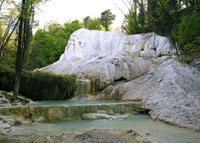 The waterfall named for he resemblance of the mouth of a whale, is the most impressive limestone formation of the Fosso Blanco. |
|||
|
Mappa Val d'Orcia | Ingrandire mappa
|
||||
Bagno Vignoni, an immersion in the Val d'Orcia |
||||
The route starts from the tourist office located at the entrance of Bagno Vignoni. Take the paved road in the direction indicated by the sign of farmhouses. The asphalt road leads straight into the dirt and get to Vignoni Alto after about 40 minutes of ascent through olive groves and vineyards. (...)
|
||||
|
||||
From San Quirico d'Orcia to Bagno Vignoni
|
||||
|
|
||||
Walking in Tuscany | San Quirico d'Orcia, Bagni Vignoni, Castiglione d'Orcia, Rocca d'Orcia, Montalcino, La Foce
|
||||
|
||||
Podere Santa Pia |
Podere Santa Pia |
San Quirico d'Orcia, Cappella della Madonna di Vitaleta |
||
Banfi, Castello di Poggio alle Mura, |
Rocca d'Orcia |
Pienza |
||

